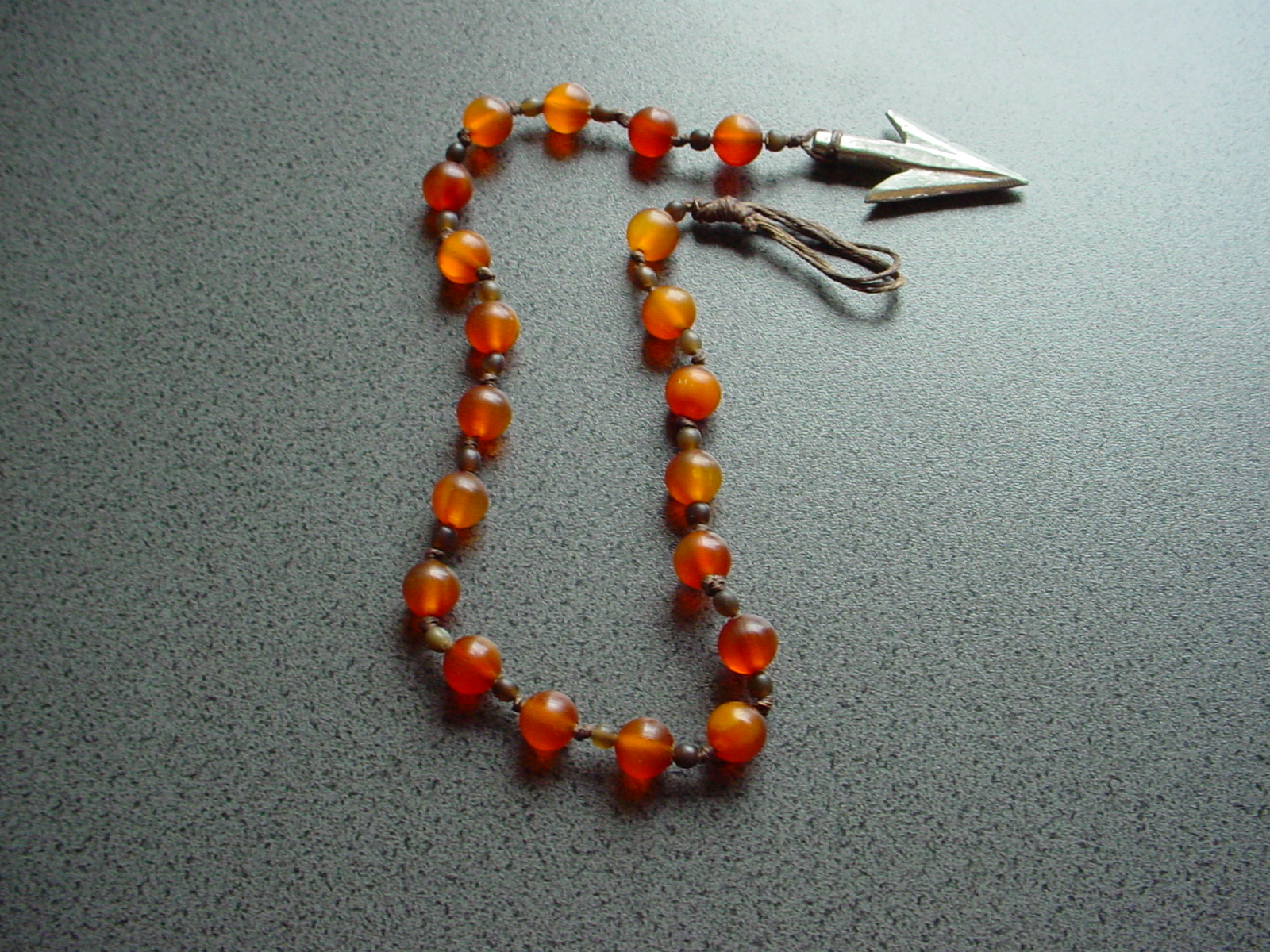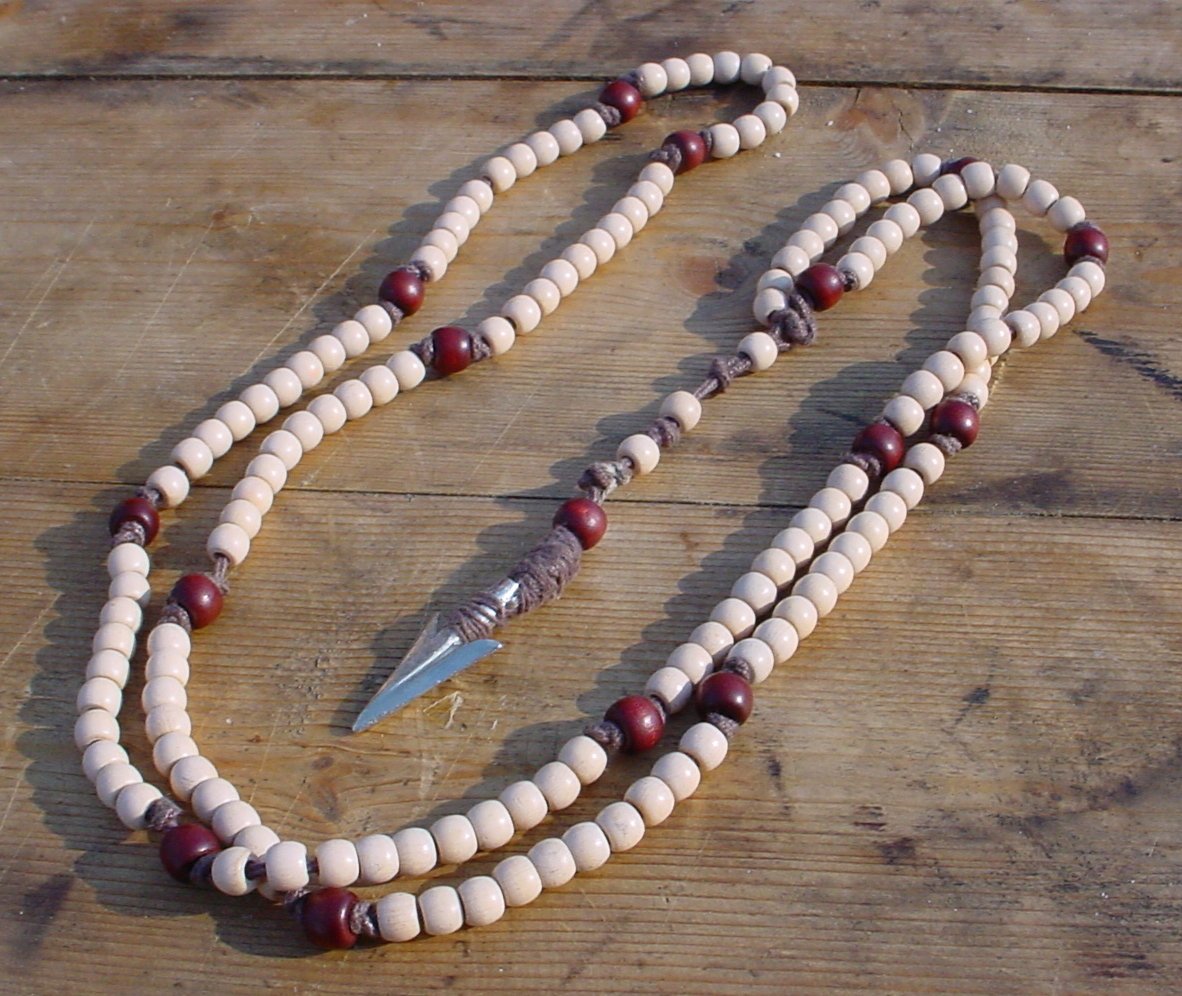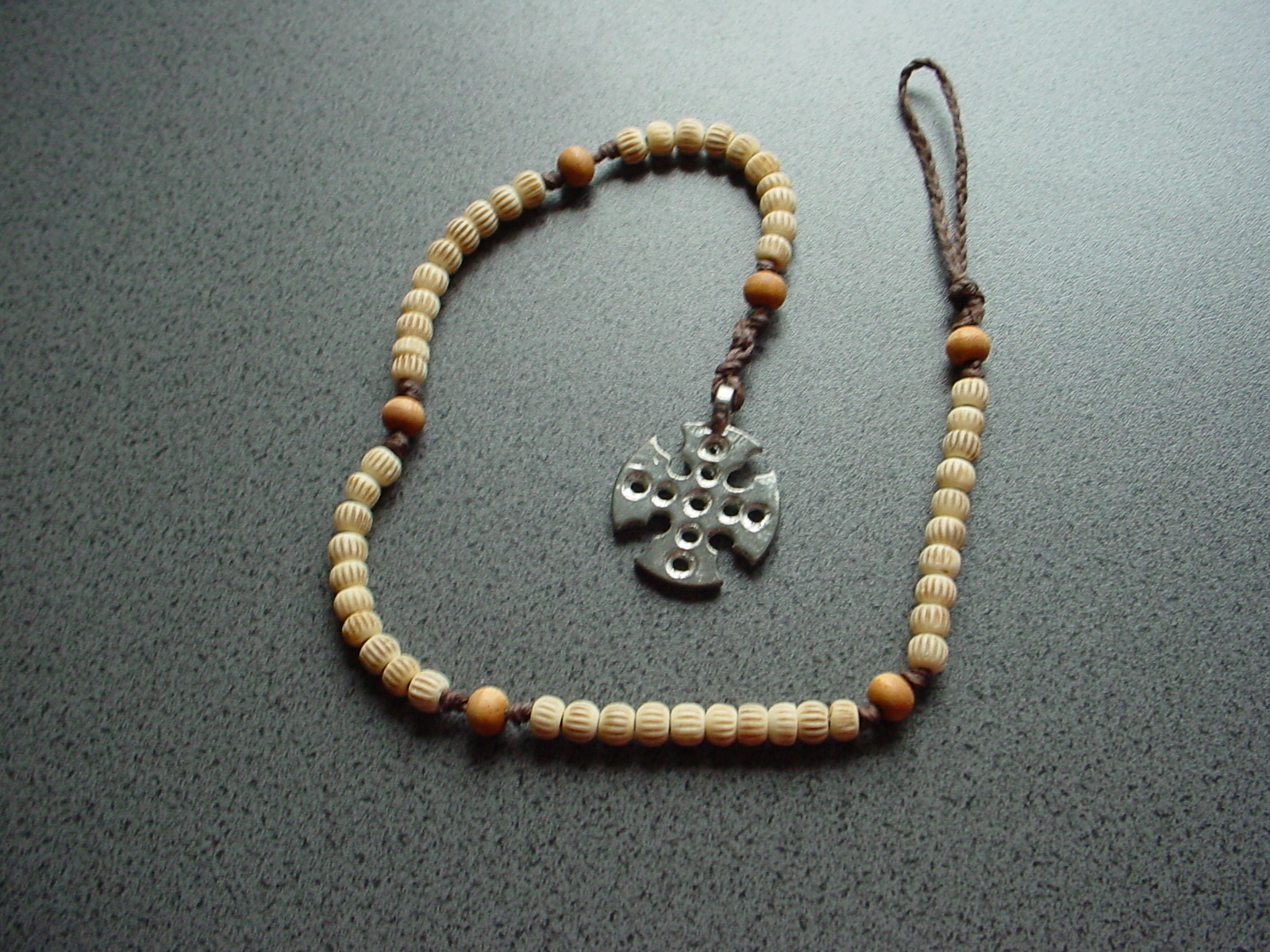Paternoster
The Paternoster (rosary)
During the medieval period, religion played a much different role in society than it does today. Religion was part of everyday life; the church heavily influenced social customs, science, food and even colour. Everyone during this time would be religious and would appear to be so by wearing a paternoster, known today as the rosary (rosarius means a garland or bouquet of roses). The rosary was used as a prayer counter to aid the reciting of prayers, and was heavily used during the medieval period. Saying the rosary was said to be an antidote to heresy and sin.
This practice seems to have originated among the early monks and hermits, who used a piece of heavy cord with knots tied at intervals upon which they recited their shorter prayers.
Rosaries aren't standardised at this point, so they can vary from twenty to one hundred and fifty beads. They do not have to have a crucifix on the end; some have a cross, but it is of the square variety rather than the T shape. Rosaries often had symbols of the person’s favourite saint or a simple tassel. Its' beads are made from wood, bone, glass, pewter or, rarely, silver. From the thirteenth century the manufacturers of these beads (bead was the Old Saxon word for prayer) were known as "paternosterers."
The construction of the rosary follows a simple pattern that is connected to prayer; the two types of beads represent the two types of prayers. The smaller beads are divided after every tenth bead by a larger or different bead. These ten beads are called ‘Hail Marys’ and they are divided with an ‘Our Father’ bead between each ten. A full rosary would consist of one hundred and fifty ‘Hail Marys’ beads and fifteen ‘Our Fathers’. Rather than just the simple repetition of these two prayers, in Latin, we were expected to contemplate and meditate upon the 15 mysteries of Christ.
 Joyful Mysteries 1. The Annunciation 2. The Visitation 3. The Nativity of Jesus 4. The Presentation of Jesus in the Temple 5. The Finding of Jesus in the Temple
Joyful Mysteries 1. The Annunciation 2. The Visitation 3. The Nativity of Jesus 4. The Presentation of Jesus in the Temple 5. The Finding of Jesus in the Temple  Sorrowful Mysteries 1. The Agony of Jesus in the Garden 2. The Scourging of Jesus at the Pillar 3. The Crowning with Thorns 4. The Carrying of the Cross 5. The Crucifixion and Death of Jesus
Sorrowful Mysteries 1. The Agony of Jesus in the Garden 2. The Scourging of Jesus at the Pillar 3. The Crowning with Thorns 4. The Carrying of the Cross 5. The Crucifixion and Death of Jesus  Glorious Mysteries 1. The Resurrection of Our Lord 2. The Ascension of Our Lord 3. The Descent of the Holy Ghost upon the Apostles 4. The Assumption of Mary 5. The Crowning of the Blessed Virgin in Heaven
Glorious Mysteries 1. The Resurrection of Our Lord 2. The Ascension of Our Lord 3. The Descent of the Holy Ghost upon the Apostles 4. The Assumption of Mary 5. The Crowning of the Blessed Virgin in HeavenPater noster (The Lord's Prayer)
| Pater noster, qui es in caelis, sanctificetur nomen tuum. Adveniat regnum tuum. Fiat voluntas tua, sicut in caelo et in terra. Panem nostrum quotidianum da nobis hodie, et dimitte nobis debita nostra sicut et nos dimittimus debitoribus nostris. Et ne nos inducas in tentationem, sed libera nos a malo. Amen | Our Father, who art in heaven, hallowed be Thy name. Thy kingdom come. Thy will be done on earth as it is in heaven. Give us this day our daily bread and forgive us our trespasses as we forgive those who trespass against us. And lead us not into temptation, but deliver us from evil. Amen. |
. Ave Maria (Hail Mary)
| Ave Maria, gratia plena, Dominus tecum. Benedicta tu in mulieribus, et benedictus fructus ventris tui, Iesus. Sancta Maria, Mater Dei, ora pro nobis peccatoribus, nunc, et in hora mortis nostrae. Amen. | Hail Mary, full of grace, the Lord is with thee. Blessed art thou amongst women and blessed is the fruit of thy womb, Jesus. Holy Mary, Mother of God, pray for us sinners, now, and in the hour of our death. Amen. |
